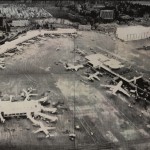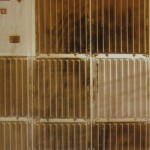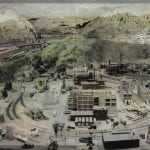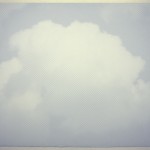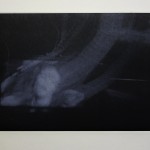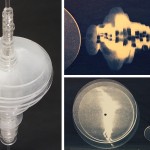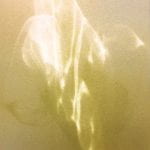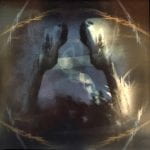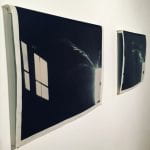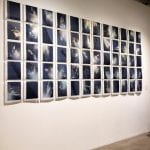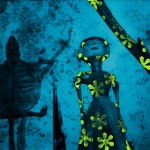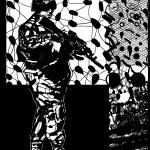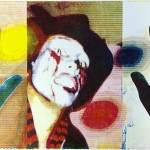The Contemporary Print Media Research Center fosters a multidisciplinary research framework and develops integrative research and innovative projects in print media.
Projects:
We pursue practice-led research in print media that is a close relationship of digital and new media technologies combined with other artistic modes for creative practice that include emerging disciplines.
These disciplines include:
- Autographic, Photographic and Digital Printmaking Processes
coordinating art and technology; incorporating printmaking, photography, digital imaging and printing, film and digital media, and performance art
- Laser Cutting and CNC Printing, 3D and Rapid Prototyping Technology
coordinating art and technology, art and communication, art and science, art and design, engineering and mathematics, physical and life sciences
- Silkscreen and Book Arts
coordinating art and design and elements of anthropology, sociology, history, literature, creative writing and music
People:
Jimin Lee
Current research projects and topics
Large format and multiple laser- cut woodblock printing
In my employment of the latest laser cutting technology, through my deep research and experimentation, to achieve my artistic outcomes, I am actually operating opposite in most cases to the manufacturer’s industrial and standardized guidelines found in their manuals. I have developed and updated the age-old woodblock print technique by using this cutting edge technology. After numerous test runs with different cutting speeds and power configurations I have made remarkable progress that enables me to render the intricate tonal range of higher resolution photographic images in the recalcitrant medium of wood at a scale and in a quality that other artists have been unable to achieve so far. My labor-intensive processes of printmaking in the form of multiple laser-cut blocks result in rich and unique textural surfaces in large scale prints that slow down the act of looking by viewers.
Intermedia practice between photography, digital imaging and print
Digital tools and their applications in image production have brought print and photography into increasingly close proximity over the last twenty years. The amalgamation involves printed images and ephemera, encompassing such artistic modes as drawing, installation, performance, industrial technologies, film and sound/music.
In my work, everyday realities captured in my own photographs become ambiguous and even confusing to the viewer because of the digital manipulation I impart. This manipulation becomes the means by which I tell my stories and trigger the viewer’s imagination. The photographic images in many of my pieces function as elements that persuade the viewer to read the digitally-reconstructed images as more realistic, even though they are fictional.
My research topics and questions include:
- What role has photography played as a processing tool in artists’ production of prints in the digital and post-digital era?
- How do amalgamations between print and photography open up the possibilities for interdisciplinary work -- not restricted to two-dimensional images, but also including such modes as drawing, installation, performance, industrial technologies, film and sound/music?
- Do the varying terms used for the intersections between photographs and prints, such as ‘photographic print’, ‘photo-mechanical print’, and ‘photo-based print,’ indicate different approaches and processes? If so, how are these relevant in artists’ strategies?
- Does the prevalent use of digital cameras as a device for capturing movement or a sequence in time and space further the performative aspects of photographic and print practice?
Enrique Martinez Leal
Research interests and projects
Over the years my work has progressively integrated the advances of digital imaging procedures in print media and more recently CNC (computer numerical control) technologies into its production. I have sought to go beyond the reproductive technological innovations afforded by these processes by elaborating on the phenomenological, conceptual and material meanings they - as well as analog operations - provide to print media.
A recent laser-engraving project involves reproducing and integrating audio-visual data culled from a segmented video of meteorological phenomena that sub-sequentially allows for a multidimensional, synesthetic reconfiguration of its visible and sonic occurrence. Here the focus is on conceptually integrating and expanding the generative capabilities of reproductive technologies beyond their perfunctory tasks.
A series of silkscreen prints examine the qualities of emergence that arise from rasterizing images of clouds, where the encoded expanding and contracting dots correspond visually with the varied water droplets that form the distended cumulus. The viewer’s apprehension of coinciding realities provides an aesthesis in constant flux rather than a fixed representation.
An ongoing series of photopolymer prints probe the inclusivity of still and moving images by underscoring indexical and materialist speculations surrounding photographic, projected and printed images. Where compelling sensory compounds show the autographic trailing movement of the hand held camera as an event imprinted with white ink on black paper.
In all these cases, the materials and procedures purposefully inform the meaning the work will take and in doing so become active participants in the processes of poiesis and signification.
Sarah Sanford
Research Interests and Projects
The surface of the contemporary art print is evolving rapidly. Historically printmaking focused on the haptic qualities of the surface to define its process. Now in the digital age, the surface has shifted towards an enervated surface of the screen. New adaptations with digital and photographic applications continue to blur lines of location between a print and that of a photograph; the haptic and enervated vaguely distinct. This lack of distinction has the potential to push the surface reading to the point that its characteristics are no longer clearly defined to that medium. My work investigates this changing paradigm by looking at the graphic nature of screenprinting and using its limitations as a way to manipulate surface qualities.
Digital Techniques with Photo-Silkscreen
The characteristics of screenprint images split between the haptic surface of graphic stenciling with pronounced dot matrices to ultra-fine halftones. I employ the half tone grid as a tool to manipulate and break down photographic images using a unique posterization method. Documenting the physical nature of light, my imagery is intentionally connected to ideas surrounding the lens; resembling medical scans, xrays, microscopy and celestial bodies. Through the process of photo-silkscreen, exposure to ultraviolet light translates these stenciled bits of information to the mesh, and can be seen conceptually as a view into our world encountered through the multiple lens of our daily lives. Translating these screens of information through fastidious hand printing with light reflective inks results in visual nuances that reexamine the print surface in terms of a painting, rather than simply a reproduction.
Print and Physical Dimension; Multiple Surfaces and New Print Formats
My ongoing interests lie in multi-dimensional prints and contemporary print formats. Recent projects combine screenprints and cyanotypes on paper with screenprints of light refractions on digitally printed film. Layered with plexi glass, the stacked images are contained within shadow boxes, resembling a portal. The new juxtaposition of surfaces brings added tension between the physical characteristics of the haptic and the enervation quality of the photograph.
Other current projects engage in topics of installation through exploration of new formats. I employ subtle forms of projection to rethink the flat surface of the print in relation to the surface of the gallery wall. Continuing to work with the grid, my large-scale print installation works abandon the frame and instead use ledges, pins and magnets to project the print as a form in shallow space. By removing the “screen” (aka frame) allows for direct visual engagement with the surface of the print, providing an enhanced reading of subtle haptics and a reorientation of dimension and space.
Richard Wohlfeiler
My current practice substantially involves a variety of approaches to print media—relief, intaglio, lithographic, and photographic processes—and is integrally engaged with creative application of digital tools. Conceptually, these technologies offer ways to extend the visual languages of traditional printmaking, but, more than this, they also reflect ideas, methodologies, and patterns of thought and feeling embedded in the fabric of contemporary culture that call for new perspectives and ways of thinking.
Making relief printing matrices using a laser cutter allows effects that can be achieved in digital imaging but would be difficult, if not impossible, to carve using manual tools and methods. These include half tone patterns, photographic sources, geometrically precise mechanical diagrams and fine line work, text, and color relief prints using CMYK separations. Digital imaging techniques can also evoke traditional signs of autographic marking that register individual gesture and touch, engaging categories of “authenticity” in critical ways. Printing these matrices, however, proceeds in the traditional manner, and requires the knowledge and art of press printing and its materials. Fusing traditional and contemporary processes in this way opens relationships between making and thinking.
I similarly use computer and laser cutter to design and execute intricate paper cuts to develop a dialog with folk/craft traditions.
Current visual interests and ideas include exploring the kinds of conceptual, expressive, and interpretive spaces generated through the interplay of visual elements and graphic forms associated with different systems of representation and design. I frequently include elements based on photographic sources, both my own and found (or lost) photographs. I consider these, especially the found photos, as documents of vernacular history—personal, private, and inviting empathetic reading and interpretation. The absence of associated documents in dealing with this material encourages methods of reading and understanding that highlight the layered nature of visual intelligence, in which the perception of meaning can be analytical and based on research but also intuitively associative, subjective, and sensitive to registers of feeling. There is also the issue of how we might creatively employ artifacts from the past in finding or constructing our sense of the present moment. Broader textures of history are always potential subtexts of lost (or found) material.
Other interests include: studies of perceptual phenomena through projects involving stereo photography and prints (stereo cards and anaglyph); sequential visual narratives in book arts and design—both hand made books and print-on-demand possibilities; and extending print media practices into animation and video.

